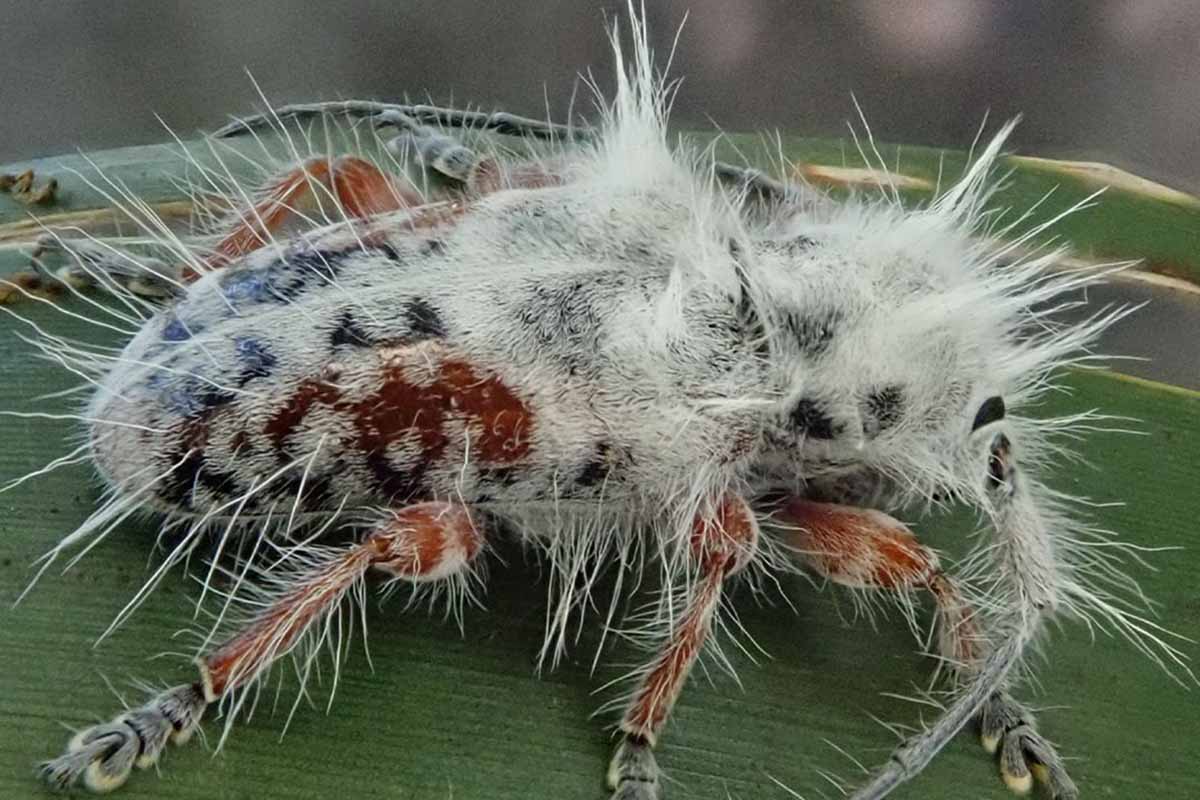An entomologist has found a new hairy beetle in Queensland, Australia, potentially the hairiest in the world. The news makes us reflect on how many unknown species there could still be and how many of these could be at risk of extinction

@James Tweed
In an astonishing revelation from a campsite in Queensland, Australia, an entomologist stumbled upon a new, remarkably unique insect.
A Discovery in the Wild
James Tweed, a doctoral candidate at the School of the Environment, who usually studies insects from Norfolk Island in the South Pacific, encountered what initially appeared to be bird droppings on a leaf outside his tent. Upon closer inspection, however, Tweed discovered the droppings were in fact a spectacular red and black beetle, almost 0.39 inches (10 millimeters) long, adorned with unusually thick and long white hairs covering the upper half of its body.
Realizing it belonged to the longhorn beetle family, which comprises about 36,000 described species, Tweed found this particular specimen unmatched by any known species. Despite extensive research through books, scientific articles, and online resources, no similar species was identified.
This led to the realization that the beetle was not only a new species but represented an entirely new genus or family of species, now scientifically named Ekcastra albopilosa, potentially the fluffiest insect in the world.
Naming a new species
“We chose the name Ekcastra for the genus, which means ‘from the field’ in Latin, and for the species name we decided on albopilosa, which translates to ‘white and hairy,'” Tweed explained.
He further speculated,
“We do not yet know the function of these hairs, but our main theory is that they make the insect appear as if it has been killed by a fungus that preys on insects. This could deter predators such as birds from eating it, but until someone finds more specimens and studies this species further, we cannot be sure why this beetle is so hairy.”
The importance of chance discoveries
Tweed emphasized that accidental discoveries like this highlight the unknown number of species that exist and the many that could be at risk of extinction.
“We are experiencing a rapid decline in biodiversity globally, and it’s challenging to conserve species if we do not even know they exist. Insects are the most diverse group of animals on the planet, yet they are also the most underrated and understudied. The best estimates suggest there could be 5.5 million insect species worldwide, and only a fifth of these have been named and described,”
Tweed remarked, shedding light on the vast unknown that remains in the world of insects.
Source: The University of Queensland
